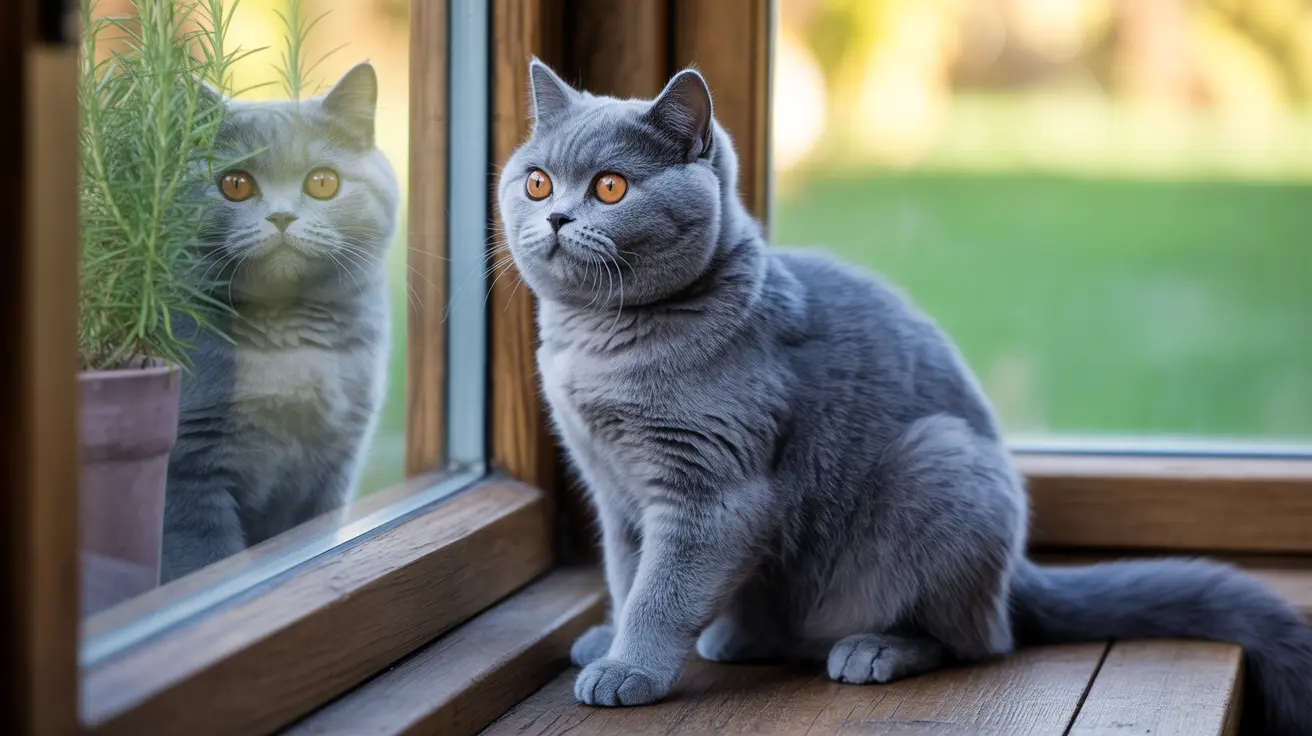Understanding Manx Cat Color Basics
Manx cats display an extensive palette of colors and patterns recognized by major cat registries worldwide. While they're best known for their lack of tail, their coat colors play an equally important role in their appeal. These cats can sport solid colors, bi-colors, tortoiseshell patterns, and various tabby markings, making them one of the most diverse breeds in terms of appearance.
Common Solid Colors in Manx Cats
The most fundamental colors in Manx cats include:
Pure White
White Manx cats possess a stunning, snow-white coat that can be accompanied by either deep blue or copper/gold eyes. Some may even have one eye of each color, known as odd-eyed white.
Jet Black
Black Manx cats feature a dense, rich black coat from root to tip, complemented by black nose leather and black or brown paw pads.
Blue
The blue color in Manx cats is actually a dilute version of black, appearing as a beautiful slate-gray shade that should be even throughout the coat.
Popular Patterns and Combinations
Tabby Variations
Tabby patterns are among the most common in Manx cats, appearing in several forms:
- Classic tabby with swirled patterns
- Mackerel tabby with striped markings
- Spotted tabby featuring distinct spots
Tortoiseshell and Calico
Female Manx cats can display these complex color combinations:
- Traditional tortoiseshell mixing black and red
- Calico patterns featuring white with patches of black and red
- Dilute versions in softer shades of blue and cream
Rare and Unique Color Variations
Some of the more uncommon color variations include:
Silver and Smoke
These sophisticated colors feature white undercoats with colored tips, creating a stunning visual effect when the cat moves.
Shaded Patterns
Shaded Manx cats show a gradual transition from darker colors on top to lighter shades underneath, creating a beautiful gradient effect.
Genetic Factors Influencing Manx Cat Colors
The wide variety of Manx cat colors results from complex genetic interactions. Multiple genes control different aspects of coat color and pattern, including:
- The base color gene determining black or red pigmentation
- Dilution genes that create softer versions of base colors
- Pattern-producing genes responsible for tabby markings
- White spotting genes that create bi-color combinations
Frequently Asked Questions
What are the most common coat colors and patterns seen in Manx cats?
The most common Manx cat colors include solid black, white, and blue, along with various tabby patterns. Bi-color combinations featuring white with another color are also frequently seen.
Why are pointed (Siamese-type) colors not accepted in Manx breed standards?
Pointed colors are not accepted because they're not part of the traditional Manx genetic makeup. The breed standards focus on maintaining the natural color variations that developed on the Isle of Man.
How do genetics influence the wide variety of Manx cat colors and patterns?
Different genes control various aspects of coat color and pattern. These include genes for base colors, dilution, pattern production, and white spotting, all working together to create the diverse range of Manx cat colors.
Can Manx cats have odd-colored or heterochromatic eyes, and is this linked to their coat color?
Yes, Manx cats can have odd-colored eyes (heterochromia), particularly in white cats. This trait is genetically linked to the white coat color gene.
Do certain Manx cat colors or patterns affect their health or risk of genetic disorders?
No, coat colors and patterns in Manx cats have no known impact on their health or genetic disorders. The gene responsible for their tailless characteristic is entirely separate from color-determining genes.
Whether you're considering adding a Manx cat to your family or simply admiring these unique felines, their diverse array of colors and patterns makes them truly special. Each color combination tells its own story, contributing to the rich heritage of this beloved breed.






